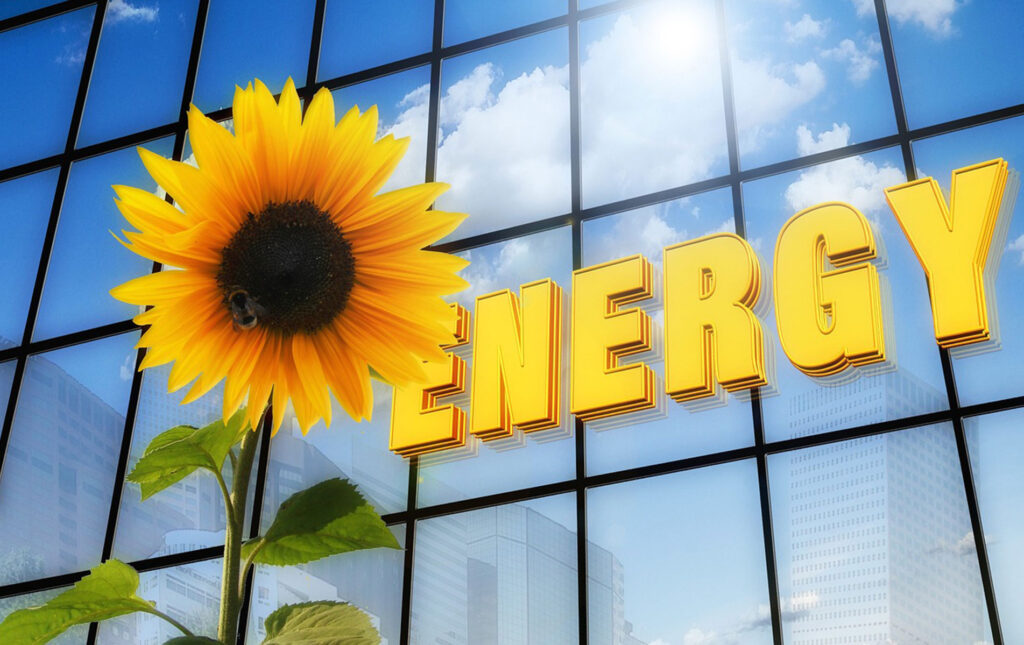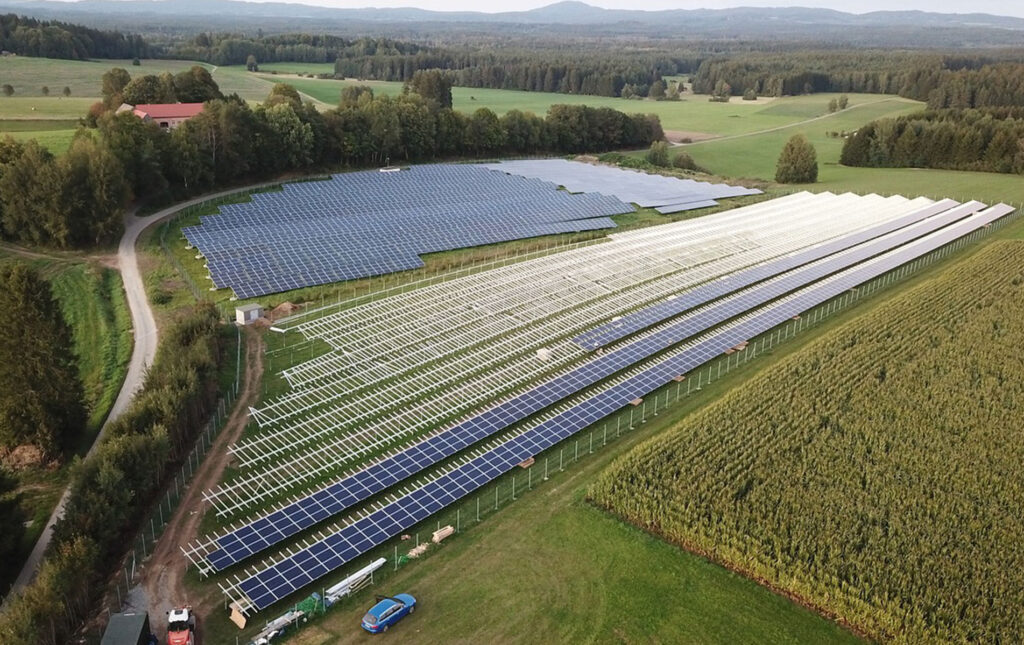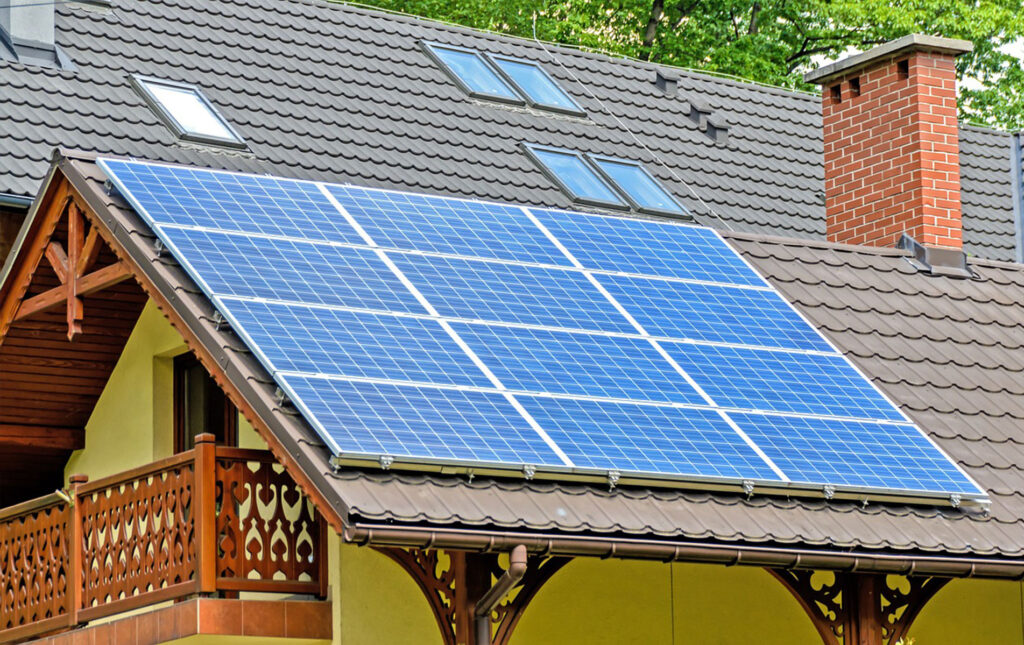Climate Change and Solar Energy are two critical topics that have garnered significant attention in recent times. The rise of global temperatures and the detrimental effects of carbon emissions have pushed society towards more sustainable and renewable sources of energy. In this blog, we will explore the relationship between climate change and solar energy and the impact it has on our planet.

Climate Change and Solar Energy
The world is currently facing a climate crisis, and scientists have warned that if we continue to emit greenhouse gases at the current rate, the earth’s temperature will rise by 1.5°C above pre-industrial levels by 2040. This rise in temperature will result in disastrous consequences, including rising sea levels, more frequent and severe weather events, and devastating effects on our ecosystems.
One way to mitigate the effects of climate change is by transitioning to renewable sources of energy such as solar power. Solar energy is the most abundant source of energy on the planet, and it has the potential to provide us with more energy than we could ever need. Unlike fossil fuels, solar energy is clean, renewable, and does not emit harmful greenhouse gases.
Solar Energy Panels
Solar panels are becoming increasingly popular across the world, and they have a crucial role to play in reducing our reliance on fossil fuels. They work by converting sunlight into electricity, and they can be installed on the roofs of homes, businesses, and even on large-scale solar farms.

The adoption of solar energy is on the rise, and it is quickly becoming one of the most popular forms of renewable energy. According to the International Energy Agency, solar energy could be the world’s largest source of electricity by 2050. This transition to solar energy would result in significant reductions in carbon emissions, thus reducing the impact of climate change.
Types of Solar Energy
There are several types of solar energy. The most common types include:
Photovoltaic (PV) solar energy
PV solar energy is produced using solar panels made up of photovoltaic cells. These cells convert sunlight into electricity, which can be used to power homes, businesses, and other applications.
Concentrated solar power (CSP)
CSP solar energy uses mirrors or lenses to concentrate sunlight onto a small area, which heats up a fluid to create steam. The steam is then used to power a turbine and generate electricity.
Passive solar energy
Passive solar energy refers to the use of design strategies that take advantage of the sun’s energy without the use of mechanical or electrical devices. For example, a building may be designed to maximize natural light and heat during the winter, while minimizing it during the summer.

Solar heating and cooling systems
These systems use the sun’s energy to heat or cool water or air. Solar water heaters, for example, use sunlight to heat water for use in homes or businesses.
Rooftop Solar Energy
Rooftop solar energy involves installing solar panels on the roof of a building to generate electricity from the sun’s energy. The panels contain photovoltaic (PV) cells, which convert sunlight into direct current (DC) electricity. An inverter then changes the DC electricity into alternating current (AC) electricity. This AC powers the appliances and electronics in the building.
The popularity of rooftop solar energy has increased due to its potential for reducing electricity costs and carbon emissions. Homeowners and businesses can save money on electricity bills. They can even sell excess electricity back to the grid through net metering programs. This program credits the owner’s account when the building generates more electricity than it consumes.
Several factors need to be considered before installing rooftop solar panels, such as the roof’s orientation and pitch, nearby trees or buildings shading the roof, and local regulations and incentives. It’s important to seek advice from a qualified solar installer to determine if rooftop solar is a viable option for your home or business.

Pros and Cons of Solar Energy
Pros:
Renewable
Solar energy is a renewable source of energy that does not deplete natural resources.
Low maintenance
With advanced technologies Solar Energy panels require very little maintenance, which can save time and money in the long run.
Energy independence
Solar energy can provide energy independence from the grid, which can be especially important in areas with unreliable or expensive electricity.
Cost-effective
With decreasing costs of solar panel technology, solar energy is becoming increasingly cost-effective, which can save money on electricity bills.
Environmentally friendly
Solar energy is a clean and environmentally friendly source of energy that does not produce harmful emissions.

Cons:
Weather-dependent
Solar energy production is weather-dependent and may not work effectively during cloudy or rainy days.
Upfront costs
The upfront costs of installing solar panels can be high, which can be a barrier for some homeowners or businesses.
Land-use issues
Solar panels require land or rooftop space, which can be an issue in densely populated or urban areas.
Storage
Solar energy must be stored in batteries for use when the sun is not shining, which can be expensive.
Energy output
Solar energy production is affected by many factors. Factors such as location, orientation, and shading, can affect the energy output and efficiency of solar panels.
In conclusion, the relationship between climate change and solar energy is evident. The world is facing a climate crisis, and we need to take action to mitigate its effects. Solar energy is a sustainable and renewable source of energy. It has the potential to provide us with clean energy for years to come. By adopting solar energy, we can reduce our reliance on fossil fuels and take significant steps toward combating climate change.
FAQS
Can you recycle solar panels?
Yes. The process of recycling solar panels involves separating the different components of the panel, such as glass, aluminum, and silicon cells. Each of these components can then be reused in the production of new solar panels or other products.
Do dimming lights save energy?
Yes, dimming lights can save energy. In addition to reducing energy consumption, dimming lights can also extend the lifespan of the bulbs. By reducing the voltage supplied to the bulb, you are reducing the heat produced by the bulb, which can cause the bulb to burn out more quickly.
Do unplugging appliances save energy?
When appliances are plugged in, even if they are turned off, they still consume a small amount of electricity. This is known as “standby power” or “vampire power”, and it can account for up to 10% of a household’s energy usage. By unplugging appliances when they are not in use, you can eliminate this standby power and save energy.
Does closing vents save energy?
Closing vents can actually lead to an increase in energy usage, rather than a decrease because it can cause your HVAC system to work harder and less efficiently. Closing vents reduces airflow through the ducts, increasing pressure, causing leaks, and even breaking the ducts, resulting in expensive repairs. Furthermore, the increased pressure can lead to temperature imbalances, making some rooms too warm or too cold, causing discomfort
Does closing doors save energy?
Closing doors can help save energy in certain situations, especially if you are trying to heat or cool a specific area of your home.
Does daylight savings time save energy?
Daylight savings time (DST) was originally implemented to save energy by extending the amount of daylight in the evenings during the summer months when people tend to use more energy. The idea is that by shifting the clocks forward by one hour in the spring, people will have an extra hour of daylight in the evening, which will reduce their need for artificial lighting and potentially reduce their energy usage.
However, the energy-saving benefits of DST are somewhat controversial and not universally agreed upon.


